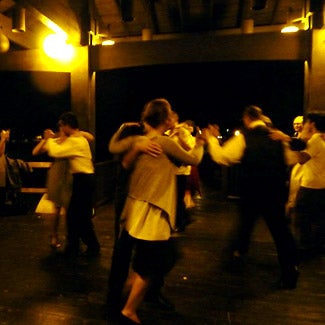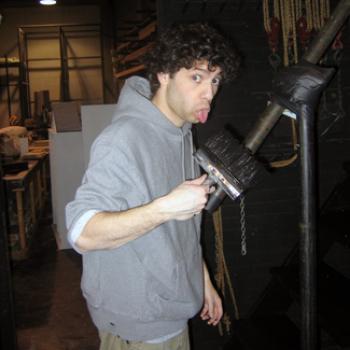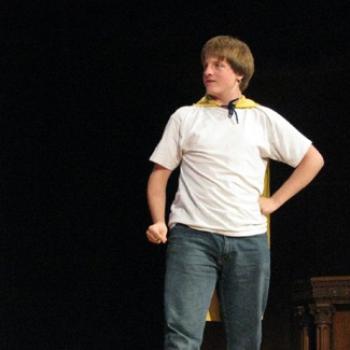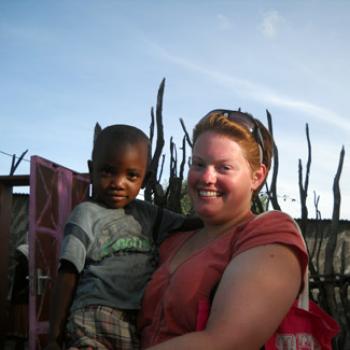On learning tango
Amy Hess ’12
“Nothing is as awkward as the first class of Argentine tango. Take two very nervous strangers, both aware of their mutual ignorance of dancing, make them stand chest-to-chest and hold each other, and you get some very red faces.”

I don’t know why I signed up for the Argentine Tango ExCo. Maybe because it sounded cool. Maybe because I’ve nursed a small yearning for dance ever since I spent a week with my dance-obsessed aunt. Maybe I needed to do something that nobody I knew would expect of me: to publicly break out of the shy, type-A mold I’d cultivated over many years of school. For whatever combination of the above theories, I found myself at the Cat in the Cream on a Saturday afternoon, heels in hand, for the first class of Beginning Tango.
Nothing is as awkward as the first class of Argentine tango. Take two very nervous strangers, both aware of their mutual ignorance of dancing, make them stand literally chest-to-chest and hold each other in the classic dancing embrace, and you get some very red faces. Instruct them to walk together, and the results are bruised toes, bruised pride, and the self-conscious urge to get out of the current situation as quickly as possible. During the first few classes, many students succumb to the temptation to quit, laughing off their embarrassment and intimidation with various excuses.
But many stay: they can’t admit defeat, love dancing, or need to find out which ridiculous, risqué, or politically-incorrect analogy our teacher will make the next week. The steps get harder, and as we all get more comfortable, our enjoyment increases. We add Friday night review practices and biweekly “milongas” (social dances) to our schedules.
The moment of true addiction comes differently to each person. For me, it was sometime in the second module of first semester. Before then, I didn’t fully trust the lead. This is understandable when your lead is a beginner like you and has little idea what he’s doing. But eventually, they get better or you dance with someone more experienced. Then, the space between you two, essential for self-preservation with a beginner, creates a disconnect &mdash you are two dancers instead of one pair. I was dancing one fall night with a very good lead. He said something to me suggesting a better connection, and as I finally let myself turn to him completely face-to-face in our embrace, I let my defensive guard down. Suddenly, we were dancing together in a way I hadn’t been able to before.
From then on, I was addicted, each dance giving me a fix of the sort of connection that we rarely experience anymore. In the technology age, it’s so easy to contain your human interactions in phone calls, emails, and texts. To give yourself to another person is out of the modern American’s comfort zone. But if you can let your reservations and stubborn independence go, even for the three minutes of a tango song, you can experience real human connection. People sometimes think of tango as a sexual dance, but it’s really not: tango is about mutual trust.
I will remember one dance for the rest of my life. It happened at the end of class, sometime in the spring. Our teacher put on his favorite waltz, Desde el Alma, and a very good lead asked me to dance. I closed my eyes against the world around me, and all that remained was the music and us. Words cannot describe how I knew exactly where to step, how we danced to the melody and the beat simultaneously, how we followed the changing character of the piece with our whole beings. When the dance ended, we sprung apart, as if some sort of electric energy had been released between us. We thanked each other, packed up our respective belongings, and left the studio for the real world.
Tags:
You may also like

On the energy of the arts at Oberlin
“This is Oberlin at its best. The constant performance, observation, and absorption of art in all its various forms. Oberlin is a place where art and creativity thrive, as long as there are students...
Adam Kander ’07

On there being too much to do at Oberlin
“I always thought I was good at time management, but handling five classes, three plays, two student organizations, an RA job, a radio show, and a social life as an Oberlin sophomore is a little like...
Ben Ferber ’11

On the “best kept secret in the Midwest”
“Before coming to Oberlin, I had sworn off theater completely. In fact, I was done with performing in general. But looking back, I have no clue how I thought I could have gotten away with choosing...
Holland Hamilton ’11